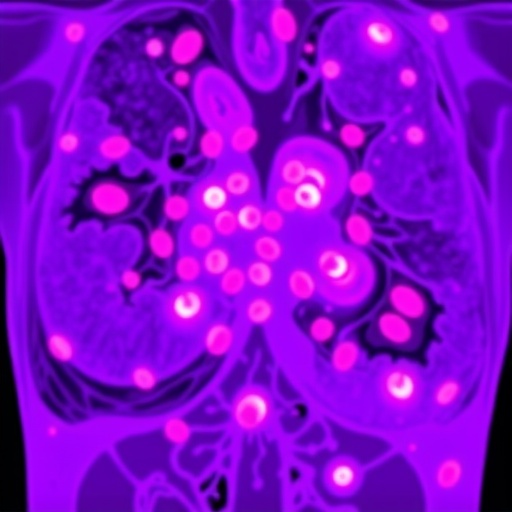In the rapidly evolving landscape of neuroscience, unraveling the intricate web of synaptic connectivity within the brain remains one of the most formidable challenges. This complex puzzle, pivotal to understanding neural circuit function, learning, memory, and even neurological disorders, requires tools of unprecedented precision and throughput. In a groundbreaking advancement poised to redefine synaptic mapping, Chen and colleagues have introduced a novel methodology combining in vivo two-photon holographic optogenetics with compressive sensing. This cutting-edge approach promises to revolutionize the scale and resolution at which researchers can decode the connectivity patterns that underpin brain function, potentially enabling discoveries that were previously unattainable.
The core innovation revolves around the fusion of two experimental cornerstones: holographic optogenetics and compressive sensing algorithms. Two-photon holographic optogenetics allows for spatially precise activation of neurons deep within living brain tissue with minimal invasiveness, ensuring physiological relevance and high-resolution control. By projecting holographic stimulation patterns, this technology achieves simultaneous targeting of numerous neurons within a three-dimensional volume, surpassing the constraints of serial stimulation techniques traditionally used in neuroscience. The integration of compressive sensing — a mathematical framework that exploits signal sparsity for efficient data acquisition and reconstruction — provides a powerful analytic backbone to infer synaptic connectivity from dramatically undersampled data sets.
Traditional synaptic mapping techniques typically rely on labor-intensive serial recordings or stimulation of individual neurons, limiting throughput and often necessitating invasive procedures incompatible with chronic or awake-behaving animal experiments. Chen et al.’s method cleverly sidesteps these barriers by enabling high-throughput functional interrogation of synaptic connections in vivo, within the living brain of animal models, securely nested under the two-photon microscope. This environment is essential as it preserves the brain’s natural milieu, including neuromodulatory influences, vascular interactions, and intact circuit dynamics — all critical parameters for authentic functional analysis.
The experimental framework starts by selecting a population of neurons expressing light-sensitive opsins, genetically coded to permit precise modulation by light. Utilizing two-photon holography, complex stimulation patterns can be sculpted deep inside the brain tissue, activating subsets of presynaptic neurons with temporal precision on the order of milliseconds. This approach permits simultaneous stimulation of multiple neurons in customized spatiotemporal configurations, mimicking physiological firing patterns or probing the functional impact of specific circuit motifs. Concurrent electrophysiological or optical readouts from postsynaptic targets capture the resulting synaptic responses, constituting a rich dataset from which connectivity maps can be derived.
Decoding this data would appear insurmountable given the combinatorial explosion of potential connectivity patterns in densely packed neural circuits. This is where compressive sensing emerges as a game-changer. Given that neural connectivity is inherently sparse — not every neuron is connected to every other neuron — compressive sensing algorithms excel at reconstructing the underlying synaptic map from surprisingly limited and noisy data. By leveraging optimization techniques and the known statistical structure of neural connections, the researchers could infer the presence and strength of synapses with remarkable accuracy, even when probing through a fraction of all possible stimulation-response combinations.
The reported system achieves a dramatic increase in throughput, enabling mapping of thousands of synaptic connections within a single experimental session. Such scale is unprecedented, providing functional connectivity maps that approach the dimensionality and complexity of intact neural circuits in vivo. This leap forward offers profound implications for studying plasticity, learning-induced circuit remodeling, and pathological rewiring in neurological diseases. The ability to map how circuits reorganize over time in behaving animals creates avenues for dynamic investigations previously considered out of reach.
Importantly, the approach is compatible with awake, behaving animals, allowing researchers to correlate synaptic connectivity changes with behavior and cognitive state in real-time. This stands in stark contrast to earlier techniques, often limited to anesthetized preparations or ex vivo tissue slices where circuit dynamics can be drastically altered. The marriage of high-resolution stimulation and functional readout in this live, physiologically relevant context offers an unprecedented window into the brain’s operational logic and adaptability.
From a technical standpoint, implementing this method required significant advances in optical instrumentation and computational modeling. Two-photon holographic stimulation demands precise wavefront shaping by spatial light modulators, coupled with high-speed scanning and light delivery systems to maintain temporal fidelity. Moreover, integrating real-time compressive sensing algorithms into the data acquisition pipeline required rigorous benchmarking and optimization to ensure robust performance without sacrificing resolution or sensitivity in the face of biological noise.
This methodology also opens the door to examining connectivity at multiple scales, from microcircuits comprising a few hundred neurons to mesoscopic networks spanning larger cortical regions. Because the holographic stimulation patterns can be dynamically adjusted, researchers gain the flexibility to focus on specific subnetworks or scale up to map broader circuit architectures systematically. Such flexibility is critical for adapting the approach to diverse experimental questions spanning fundamental neuroscience to translational research targeting neuropsychiatric conditions.
Furthermore, the authors show that their strategy can dissect excitatory and inhibitory synaptic inputs by combining optogenetic stimulation with cell-type-specific expression patterns and targeted readouts. Disentangling the balance of excitation and inhibition — a critical determinant of circuit stability and function — allows for richer characterization of network motifs and their contributions to information processing. This nuanced insight is essential for decoding the physiological basis of cognition and for understanding how this balance is perturbed in disorders such as epilepsy, schizophrenia, and autism.
As with any pioneering methodology, challenges remain. Optical scattering and absorption in brain tissue set physical limits on penetration depth and spatial resolution, potentially restricting applications to superficial cortical areas or necessitating adaptive optics corrections for deeper structures. Moreover, the computational burden of reconstructing large-scale connectivity maps mandates continued development of efficient algorithms and hardware acceleration to facilitate real-time or near-real-time analysis amenable to experimental feedback.
Nonetheless, the significance of this work cannot be overstated. By harnessing sophisticated optical control and modern signal processing advances, Chen et al. have paved the way toward comprehensive, high-throughput functional connectivity mapping that preserves the intricacies of the live brain’s operational environment. This platform has the potential to accelerate discovery across neuroscience domains, from elucidating fundamental circuit principles to informing therapeutic interventions grounded in precise circuit modulation.
Looking forward, combining this approach with complementary modalities such as calcium imaging, voltage indicators, and transcriptomic profiling could integrate functional connectivity maps with molecular and activity-based datasets. Such multimodal frameworks would usher in a new era of systems neuroscience, enabling holistic understanding of brain organization spanning molecular, cellular, network, and behavioral levels. The impact on unraveling neural codes and translating this knowledge into clinical breakthroughs could be transformative.
In summary, the integration of in vivo two-photon holographic optogenetics with compressive sensing constitutes a paradigm-shifting advancement in the quest to map synaptic connectivity at scale and resolution. This technology overcomes longstanding limitations by delivering rapid, precise, and comprehensive functional maps of neural circuits in live animals, holding immense promise for accelerating neuroscience research and deepening our understanding of the brain’s computational architecture. As the field embraces such innovations, the prospect of decoding the brain’s connectome with unmatched fidelity moves closer to reality, unlocking vast potential for science and medicine.
Subject of Research: High-throughput mapping of synaptic connectivity in vivo using advanced optogenetic stimulation combined with compressive sensing techniques.
Article Title: High-throughput synaptic connectivity mapping using in vivo two-photon holographic optogenetics and compressive sensing.
Article References:
Chen, IW., Chan, C.Y., Navarro, P. et al. High-throughput synaptic connectivity mapping using in vivo two-photon holographic optogenetics and compressive sensing. Nat Neurosci (2025). https://doi.org/10.1038/s41593-025-02024-y
Image Credits: AI Generated




